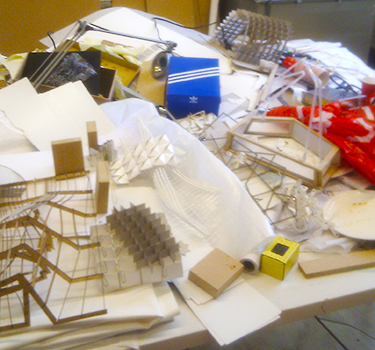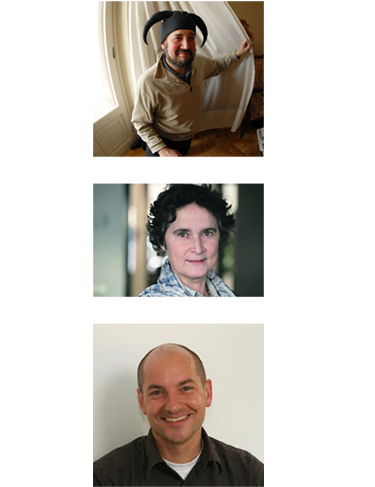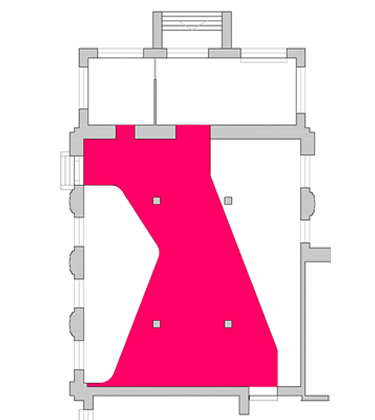project B:Collaborative Design
HyperPublic : Home / Design Plan / Collaborative Design
Collaborative design
The first topic in our design is collaborative design. Our goal is to create a better collaboration between students and teachers. Our first goal was to use the current MSc 1 student group as a test subject, however because we lacked time to properly do all the research and actually make a good design before testing it, we decided to improve future students and teachers collaboration.
For the research we interviewed different groups: Hyperbody MSc 1 Students (Atoms), teachers and professors, Hyperbody Staff members.
Atoms
In order to research the students collaboration needs, we organized workshops and debates in order to find out what the major problems are. All the atom interviews can be found here
Some conclusions can be drawn from this research, which we need to take into account in order to make a proper design:
- students like to have more physical contact to interact and learn from each others designs
- students like to have fixed spot within protoSPACE where they can design
- students like to have fixed space at the design studio for all their models
- students like to have access to protoSPACE all day without permission
- students like to know about fabrication models early in the design process so they can fabricate their own models without supervision
Teachers and professors
Next to the atom interviews we asked some teachers and professors about their opinion on this topic. All these interviews can be found here.
Also here conclusions can be drawn from the research done, which also need to be taken into account in order to make a proper design:
- We should find a common topic where the atoms relate to, use this as the topic for our design. Find related tools within this design.
- The tools we use in the design should be recognizable and easy to use by any user, no extra effort should have to be put into using the tool by the user, otherwise it will simple not be used.
- Use existing, standardized, techniques to build up your design. These are proven concepts and users can already identify with them. By merging multiple systems we can do something new.
- In order to make collaboration work, there needs to be a physical element in the design, something multiple users can relate to and interact with.
- We have to create content ourselves, translate the needs of the user (atoms) to a certain tool. We should find the tools ourselves and master them in order to make a proper translation for the atoms. We should be an added value for the users.
Different zones within protoSPACE, these zones could be used separately but also be exceeded when needed (2)
Hyperbody Staff
Also we asked the Hyperbody staff (including Tomasz Jaskiewicz and Christian Friedrich) about the needs within protoSPACE when we will design a physical object in this space. Their specific needs are:
- teachers like to be able to move furniture into different configurations to accomodate for discussions, interaction, presentation and separation between different activities going on at the same time
- teachers like to have the ability to change the natural daylight penetration into protoSPACE in an analog way, so not just zero or full daylight penetration
- teachers like to be talking with students instead of only talking to them, non hierarchical.
- teachers would like to create an easy way for students to start using the protoTAG system for physical objects
- teachers like students to find out more about older projects and learn from them, in order to invest less time reinventing the wheel and spend more time discovering new possibilities.
conclusions
Physical design space
All these conclusions are very common, they don't apply to any physical object or function yet. From the need of the students for a better working space we decided to design a physical design space for future students. This space should be on a building scale because of the studios requirements. We also however decided to improve the existing layout of protoSPACE because it lacks exactly these qualities. Our design will thus include multiple scales: from furniture to a small pavilion, all with the same construction parts.
Open source
We also want to give this project another layer: Open Source designing. Seen from the answers there is need of information about older projects and techniques existing within Hyperbody. Only problem is the availability of this information. It is either not logged properly or not logged at all. Our second goal for this project is to find a way this project can be a first step in a better logging of data, so new student and teachers can not only learn from it, but also continue the project (future collaboration).
Links:
1:
http://studiolab.ide.tudelft.nl/studiolab/aprile/
http://delta.tudelft.nl/artikel/vertrouwen-ontwerpen/23990
http://wwww.participatorysystems.com
2:
Chris Kievid private protoSPACE collection (+ design)
HyperPublic : Home / Design Plan / Collaborative Design


